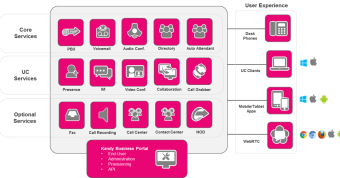Network Transformation Is Everybody’s Business: What Will Your Legacy Be?
Why should people care about the modernization of the PSTN? For years, they have relied on phones “just working” and as more and more consumers use mobile devices and over-the-top services to make and receive phone calls, and as more and more fixed lines are cancelled, isn’t the PSTN just a vestige of communications past? Why invest in improving what is arguably the oldest and biggest public utility, starting in the US?
Here are a few reasons:
- Switches put into tens of thousands of central offices (COs) – including approximately 35,000 in the US alone – are aging. With many switches well over two decades old, network failures are occurring, and this can cause interruption of vital services including public safety systems.
- While fixed lines have definitely decreased as mobile and smartphone alternatives have grown, the decrease has leveled off and businesses have become a larger percent of the lines – and the market in the US is still worth over $100 billion a year.
- With the right approach and business model, operators can actually SAVE MONEY by modernizing their COs and networks to IP – saving around 70% on their greatest expenses – energy – which has been rising dramatically – and water.
- With smaller and more efficient equipment, these COs can also reduce the physical footprint from big “power hogging” decades-old switches to much smaller and more reliable equipment requiring only approximately 15% of the space – this opens up space that can be converted into “data center” uses, for example hosting network virtualization and cloud services.
- CO2 emissions can be reduced by up to 40%, which is not only good for the local communities, but the environment at large; these reductions can also help the “phone companies” qualify for credits to offset their losses in federal funding, which is going away in 2018 in the US, based on the FCC’s transition from the Universal Service Fund (USF) to the Connect America Fund.
- Business – government – and financing organizations are coming together to provide new solutions, including financing based on energy costs savings; this is a modern twist on public-private partnerships and can positively impact shareholder value for the large tier one operators, who also need to do something about their aging infrastructure.
Here’s a quote from Tom Wheeler, Chairman of the FCC, and one of the visionaries behind the national transformation of legacy networks:
“This is what I have called the Fourth Network Revolution, and it is a good thing. History has shown that new networks catalyze innovation, investment, ideas and ingenuity. However, the way forward is to encourage technological change while preserving the attributes of network services that customers have come to expect.”
Join me in bringing our industry together to create solutions that benefit all – from the family in a rural town who will for years rely on their telephone service, to the shareholders of some of the largest corporations in the world.
Let’s take “legacy” to a new level – and leave a legacy of transformation that will also leave the planet healthier for generations to come, while also paving the way for even more innovation in how people communicate and live.





